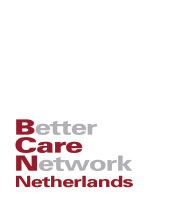As the situation continues to unfold in Haiti, we would like to ensure that our partners both on the ground in Haiti and around the world continue to receive the tools, resources, and information necessary to appropriately respond. Due to continued interest from our membership, we are dedicating a second listserv to the provision of care and protection for children in Haiti.
These resources and more are available on our website, http://www.bettercarenetwork.org
CALL FOR FEEDBACK
· Keep us updated on how your organization is supporting children in
Haiti. Contact us with updates on work on the ground at
contact@bettercarenetwork.org.
TOOLS FOR SEPARATED and UNACCOMPANIED CHILDREN
- The Lost Ones. Emergency Care and Family Tracing for Separated Children from Birth to Five Years: Guidance on how to care for the children under five who are separated from their families in emergencies. Includes chapters on tracing, registering, verification, reunification, and the provision of care to meet developmental needs.
- Action for the Rights of the Child (ARC): Separated Children: A training resource pack on preventing the separation of children from their caregivers, assessing and locating separated children, care arrangements, family tracing and reunification, and monitoring and supporting separated children.
- Working with Separated Children - Field Guide and Training Manual:
Comprehensive guide to programming for separated children. Includes chapters on agency co-ordination, prevention, documentation, tracing, reunification and emergency and interim care placements.
- Mobility Mapping and Flow Diagrams: Tools for Family Tracing and
Social Reintegration Work with Separated Children: Detailed guidance on using drawing with children to facilitate documentation and tracing efforts, as well as a tool for reintegrating separated children into families.
- Issue Brief Number Three. Child Care: An essential Service for Disaster Recovery: A short paper on the importance of child care provision as a critical service in helping local communities recover post disaster. It gives 4 policy recommendations for protecting and restoring child care infrastructure.
OTHER TOOLS:
- Persons with Disabilities and the Humanitarian Response in Haiti
Key messages and guidance for action
http://bettercarenetwork.org/bcn/details.asp?
- Guidance Note for Mental Health and Psychosocial Support: Haiti Earthquake Emergency Response: Provides guidance to organisations working in Haiti about how they can most appropriately communicate with communities, their own personnel and the media.
The Guidance Note focuses mainly on the acute phase of the response (including early recovery) and provides basic guidance for action.
http://bettercarenetwork.org/bcn/details.asp?id=21733&themeID=1005&topicID=1033
- IASC Guidelines on Mental Health and Psychosocial Support in Emergency Settings
Guidelines for a multi-sectoral response to the most urgent mental health and psychosocial issues in emergency situations.
http://bettercarenetwork.org/bcn/details.asp?id=21732&themeID=1005&topicID=1033
STATEMENTS
- Daily Haiti Earthquake Fact Sheets from USAID’s Office of US Foreign Disaster Assistance
http://www.usaid.gov/our_work/humanitarian_assistance/disaster_assistance/countries/haiti/template/index.html
- UNICEF Statement on Child Protection in Haiti notes that “It is essential that all unaccompanied and/or separated children are registered, traced and reunited with family where possible and appropriate. This includes children who were in alternative care, such as in crèches and “orphanages”, prior to the earthquake. It is imperative that inappropriate and/or illegal removal of children from Haiti is prevented.
COORDINATED HUMANITARIAN RESPONSE IN HAITI
- The Child Protection Working Group (CPWG), which is one of the sub-working groups of the global Protection Cluster Working Group (PCWG), takes responsibility for coordinating the work of the Cluster in the area of child protection. This includes ensuring a more predictable, accountable and effective child protection response in emergency situations, including by leading global-level advocacy, standard and policy-setting, capacity building and development of tools.
To learn more about the Child Protection Working Group and the One
Response in Haiti, visit the links below :
http://www.humanitarianreform.org/Default.aspx?tabid=720 and
http://oneresponse.info/GlobalClusters/Protection/CP/Pages/Resources.aspx







